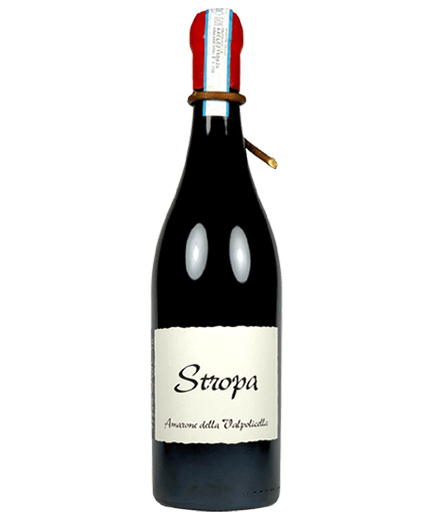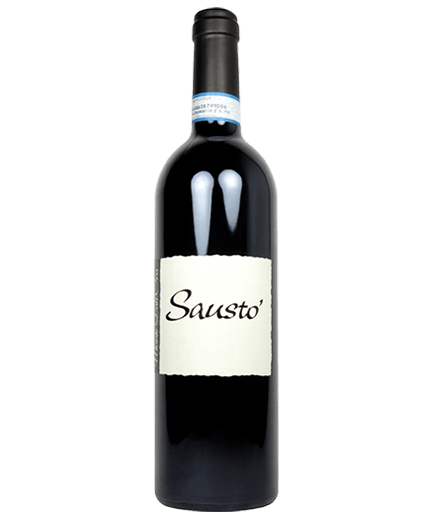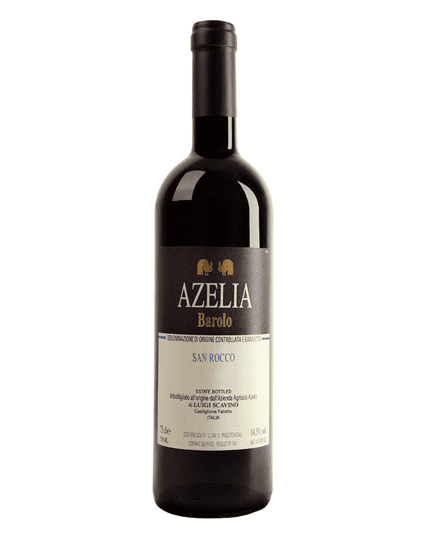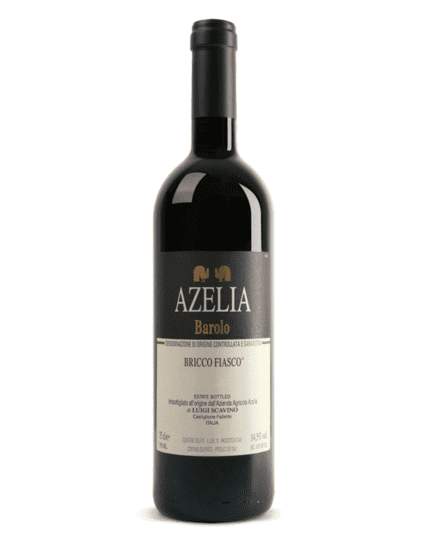Monte Dall’Ora Stropa Amarone Della Valpolicella Classico DOCG 2011
NT$ 3,800深紅寶石酒澤下透出櫻桃、李子、葡萄乾的香氣,再浮上一縷胡椒香料。入飲後圓柔的質地,帶出成熟果實的香甜,與綿密的單寧一起化在口中,整體濃郁綿長。
適合搭配梅干控肉、熟成乳酪、臘肉。
顯示第 334 至 342 項結果,共 665 項依最新項目排序

深紅寶石酒澤下透出櫻桃、李子、葡萄乾的香氣,再浮上一縷胡椒香料。入飲後圓柔的質地,帶出成熟果實的香甜,與綿密的單寧一起化在口中,整體濃郁綿長。
適合搭配梅干控肉、熟成乳酪、臘肉。

紅寶石酒澤,撲鼻而來的是滿滿的櫻桃果乾、乾燥花朵、些許烤麵包、雪松石墨香氣。口感濃郁有張力、李子櫻桃乾的酸度和迷人的燻木,包覆舌尖,最後來上咖啡和辛香回韻。
適合搭配波隆那義大利肉醬麵、家常燉肉。

《Wine Advocate》
The opaque ruby/purple-colored 1996 Barolo Cerequio possesses extremely high tannin and extract, but it is very backward, closed and firm. Full-bodied, powerful, and rich, but broodingly backward and stubborn, it possesses all the correct component parts, but patience will be required by potential purchasers. Anticipated maturity: 2010-2025.

《Wine Advocate》
The 2003 Barolo Cerequio opens with sweet, high-toned aromatics that lead to a feminine, super-ripe expression of small red fruit, minerals and toasted oak. Made in a taut, focused style, it needs a few years to come together, yet today it doesn’t appear to be an especially long-lived wine. In most vintages, the Cerequio is Voerzio’s most complete wine, but it seems to have suffered in 2003. Anticipated maturity: 2010-2015.
Roberto Voerzio is one of the very few producers who has always been enthusiastic about his 2003s. His wines are beautiful even if they have shut down considerably since I last tasted them in tank a few months prior to their bottling. Voerzio’s passion for the vintage notwithstanding, 2003 presented an extremely challenging set of circumstances. Some of the wines never fully completed fermenting their sugars. Voerzio refused to use the additives that could have helped, saying that would have compromised the wines- naturalness. In 2003 there is no Barolo La Serra or Barolo Rocche dell-Annunziata. Voerzio also decided not to bottle his Langhe Merlot. There will be a new Barolo Riserva made from his newest holdings in Fossati/Case Nere, of which Voerzio says -this will be my Monfortino.- Curiously, Voerzio is often lumped in with producers of the modernist school, yet the Piedmont wines he is most passionate about are those of Bruno Giacosa and Giacomo Conterno, both of whom are heavily represented in his own cellar.

《Wine Advocate》
The 2006 Barolo Cerequio opens with an utterly beguiling, captivating bouquet that leads to ripe red fruit, flowers, minerals and spices, all framed by sweet, silky tannins. Aromatics, textural elegance and freshness come together in this energetic, vivid Barolo. The finish is exceptionally long, pure and fresh, which suggests the wine will age gracefully for many years. The 2006 Barolo Cerequio is emerging as one of the finest wines in this important vintage. Simply put, it is awesome! Anticipated maturity: 2016-2026.
My most recent visit with Roberto Voerzio and his son Davide in November 2009 was one of the most emotionally transcendental experiences I have ever had. When all was said and done, we tasted nearly forty wines spanning vintages 1988-2008, essentially covering this inspired producer’s entire career. That tasting will be the subject of an upcoming article on www.erobertparker.com, but readers can get a sneak peak at some of the 1989s and 1990s that are covered in this issue’s “What About Now.” I saw Roberto Voerzio in September 2006 and toured his vineyards just as the Nebbiolo harvest was about to begin. The fruit was absolutely gorgeous, and fortunately Voerzio was spared any significant damage from hail. Still, Voerzio was not entirely happy with his Barolo La Serra and Merlot, and opted not to bottle those wines. Always one of the first to harvest, Voerzio brought in his Nebbiolo in the first week of September. Vinification is fairly straightforward and takes place in stainless steel. Roberto Voerzio is one of the few producers of his generation who prefers steel for the malolactic fermentations as well. The wines were aged in French oak barrels. Beginning with his 2008s, Voerzio is aging his Barolos in a combination of roughly equal parts large cask and French oak, an approach he used for his early vintages through 1993. The first wines I have tasted from cask have been simply brilliant. It will be fascinating to see where Voerzio takes his craft from here.

《Wine Advocate》
The 2008 Barolo Cerequio comes across as dark, powerful and rich. Black cherries, leather, spices, licorice and tar are some of the nuances that take shape in this intense Cerequio. Here, too, the flavors are dark and brooding. With time in the glass, the Cerequio turns suave, polished and elegant, all qualities that are typical of this site, but the 2008 never fully drops its sheer muscle. The 2008 remains big, powerful and structured. A finessed finish covers every inch of the palate with small bursts of energetic dark red fruit. This is another drop-dead gorgeous wine from Roberto and Davide Voerzio. Little of the early appeal and sensuality that is typical of Cerequio is to be found in the 2008, so readers will have to be patient. Anticipated maturity: 2018-2028.
These wines from Roberto and Davide Voerzio represent a significant turning point stylistically. This is the first year in which most of the Baroli were aged partly in cask and partly in barrel, the same approach the estate used for its early wines, up to and including the 1993 vintage. The 2008s spent their first year in equal parts cask and barrique, and a second year in French oak barrels, just 20% new, a major change over the recent past. The exceptions are the Baroli Voerzio bottled only in magnums (Sarmassa and Vecchie Viti dei Capalot e delle Brunate), which were aged exclusively in French oak because of the tiny quantities of those wines. Roberto Voerzio describes 2008 as a year that was cold from start to finish. The wines are huge, tannic and likely to require quite a bit of patience. With time, though, the pedigree of the great Barolo vineyards simply can’t be denied. The best of Voerzio’s 2008s are pure magic.

《Vinous》
“Voerzio’s 2005 Merlot, arguably the rarest bird in this lineup, is quite expressive. Naturally in a cool vintage like 2005, the more savory, mineral side of Merlot is what comes through most. Sweet tobacco, mocha, herb, black cherry , graphite and French oak are some of the signatures. The French oak is a bit dominant because of the wine’s mid-weight structure, and yet the Merlot is very nicely balanced, especially considering that 2005 was hardly an optimal vintage for making Merlot in Piedmont Drink: 2016-2023.”

《Wine Advocate》
The Azelia 2017 Barolo San Rocco shows some tightness and firmness initially, but it ultimately reveals an open and accessible quality of fruit with dried raspberry, cherry and wild plum. Those fruit flavors take a sudden turn to embrace some of the more mineral aromas associated with Serralunga d’Alba, such as iron ore and rusty nail. This hot and dry vintage release of 7,500 bottles doesn’t show the same depth or complexity that we saw in the classic 2016 growing season. Instead, this wine is fruit forward and a little more contoured and streamlined overall. On the close, you do get a point of dusty astringency that should subside with time.
適飲期: 2024 – 2042

《Wine Advocate》
A product of 85-plus-year-old vines in Castiglione Falletto, the Azelia 2017 Barolo Bricco Fiasco is subdued and delicate, with linear fruit of wild plum and blackberry, plus hints of blue flower and pressed violet. The age of the vines and the depth of the root system in the loose soils of this site have helped to maintain balance and freshness during the hottest moments of this vintage. Indeed, this wine is more immediately silky in texture compared to Azelia’s wines from Serralunga d’Alba (like the Barolo Margheria also reviewed in this report). This release of 5,600 bottles presents a nice opportunity to try your hand at a delicate rabbit ravioli for a very special occasion a few years from now.
適飲期: 2024 – 2040
|
禁 止 酒 駕 未 滿 十 八 歲 禁 止 飲 酒 |